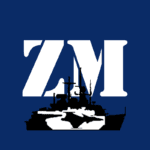Recent satellite images show the new Manta Ray drone at the U.S. Navy’s Naval Base Port Hueneme in California, highlighting its significant size and dimensions. The innovative submersible drone developed by Northrop Grumman under DARPA’s program aims to demonstrate a new category of unmanned naval platform with long endurance that can be configured for various mission types.
The images were taken between November 2023 and April of the current year. The Manta Ray is distinguished by its larger-than-originally-thought size at the Naval Surface Warfare Center, Port Hueneme Division (NSWC PHD), where it has been developed and researched.

Regarding its testing, the Manta Ray has completed an initial round of water tests in the early months of this year. According to Northrop Grumman, “Manta Ray has demonstrated its ability to plan, ascend and descend, turn, float, and anchor, some of these tasks autonomously, avoiding the need for human logistics on-site or a human captain.”
With a wingspan of 45 feet and a length of 33 feet, this unmanned vehicle is designed for various naval missions including surveillance, underwater mapping, and mine operations. Its modular design facilitates transport and assembly in the field, while its gliding technology allows for efficient operation with low energy consumption.
So far, neither Northrop Grumman nor DARPA have publicly released dimensional data or other specifications for the drone. However, Northrop Grumman has acknowledged potential operational challenges due to its size and highlighted measures taken to mitigate these issues in an internal news release earlier this month.

“Most large underwater vehicles, like submarines, are so big when fully assembled that they cannot be transported on a truck or boat. Our engineers designed the Manta Ray with these considerations in mind,” according to Northrop Grumman. “Thanks to its modular design, the Manta Ray can be broken down into parts for easy shipping. It can then be assembled in the field.”
Among its capabilities, the Manta Ray’s glider-like design helps increase payload capacity while maintaining the ability to operate persistently over very long distances, noted Northrop Grumman. Details on specific payloads and missions remain limited.
Regarding its potential missions, The War Zone suggests they could include intelligence, surveillance, and reconnaissance, underwater mapping, mine hunting, and laying. Additionally, the U.S. company mentions that it can anchor to the seafloor and “hibernate” until needed. Currently, next steps for testing and technological transition with the U.S. Navy are being explored.
You may also like: The U.S Army has employed its new Precision Strike Missile (PrSM) for the first time to attack naval targets








